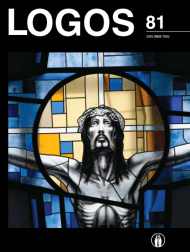Vizualinis Raštingumas: Metafora Ar Oksimoronas?
Visual Literacy: Metaphor or Oxymoron?
Author(s): Lina VidauskytėSubject(s): Visual Arts, Semiology, Aesthetics, Sociology of Culture, Phenomenology, Theory of Literature
Published by: Visuomeninė organizacija »LOGOS«
Keywords: visual literacy; metaphor; oxymoron; ut pictura poesis; image; script;
Summary/Abstract: Human beings have always looked at and seen the world around them and have made sense of themselves and others through their understanding of what they saw. Writers, too, have always dealt with the visual world. From the ancient Greek philosophers, through the art writers of the Renaissance and the aestheticists of the early Enlightenment, to the art historians, film critics and media theorists of the nineteenth and twentieth centuries, humanity studied visual forms and their meanings. In this article we distinguish the tacit understandings people have of the visual domain from what we call visual literacies. The problem of the concept of „visual literacy“ relates to the „pictorial turn“ situation in Western culture. Some analogies can be traced to compulsory primary education in the second half of 19th century which spread literacy over Western and Eastern Europe. Is, then, „visual literacy“ the appropriate concept? As a notion „literacy“ metaphorically means the ability to catch any sense from a picture, text etc. Also, the concept „visual literacy“ is probably an oxymoron? A phenomenological experience of „visuality“ and „literacy“ shows that in both cases we are dealing with different intentionalities. On the one hand, it is a reading of image (Aristotle, Horatius, various contemporary theories of literature etc.), and on the other hand, it is the phenomenological experience of visuality (J. W. Goethe, V. Shklovsky, S. Sontag, G. Didi-Huberman etc.).
Journal: LOGOS - A Journal of Religion, Philosophy, Comparative Cultural Studies and Art
- Issue Year: 2014
- Issue No: 81
- Page Range: 6-19
- Page Count: 14
- Language: Lithuanian

